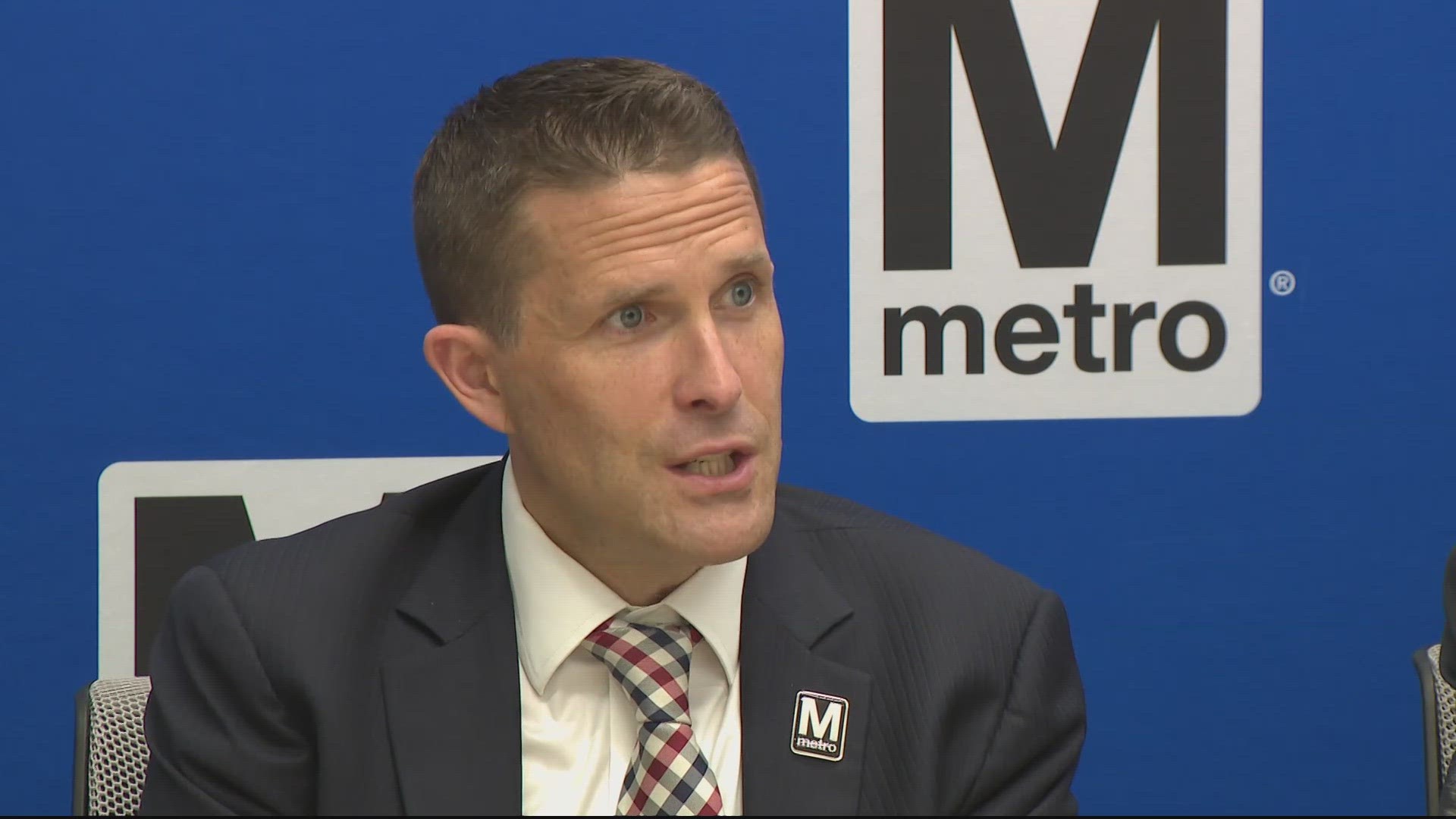WASHINGTON — Just when service seemed to be back on track with new lines completed, new stations open, and ridership starting to return, Metro is facing cuts that could be the beginning of the end for transit in the DMV.
On Thursday, Metro detailed its future financial planning to address structural funding issues that will leave a projected $750 million shortfall in the fiscal year 2025 budget when federal COVID relief funding runs out. Without an increase in funding, Metro would be forced to make drastic cuts.
As of May, weekday ridership on Metrorail and Metrobus is at 50% and 88% of pre-pandemic levels, respectively, with ridership as high as 800,000 trips or more combined on bus and rail. While Metro appears on the upswing following pandemic challenges, fare increases and service cuts alone would not close the gap, and could devastate the region financially.
"We cannot afford to let Metro fail. It is too important to the region, our economy and quality of life, connecting people to jobs and family, reducing gridlock, and cutting carbon emissions," said Metro General Manager and Chief Executive Officer Randy Clarke. "Concerns were first raised about the lack of a dedicated and ongoing funding source in 1976 when Metrorail opened, and it is time for the region to come together to solve this serious financial challenge."
Clarke said the cuts on the table are "draconian."
“The region that we know today, in my opinion, does not exist with these cuts. So anyone that doesn't use Metro – that drives a car – their life went to total misery with traffic. Everyone that relies on Metro will not be able to rely on it in the future. If you have apartments or development around a station, it's going to go drastically impacted. Our environmental conditions are going to get significantly worse and on and on," Clarke said. “So, I think we were talking about service because it's the only tool we. It's a blunt instrument for us. We don't have our own dedicated revenue source. We're not a taxing authority. So this is the one kind of tool we're left.”
Balancing the budget with service cuts would require eliminating two-thirds of Metro's existing service, with no service after 9:30 p.m. All but 37 of 135 bus lines would no longer operate, customers would wait 20-30 minutes for trains on all lines, and MetroAccess would serve a much smaller area with less hours.
Metro staff presented a detailed analysis on Metro’s future financial planning to the Board of Directors on Thursday, including the vital role of Metro and impact of potential cuts to the region.
Metro's structural funding issues were accelerated by the pandemic with an unprecedented shortfall projected for FY25, the result of inflation and labor costs, decreased revenue from ridership, and subsidy reduction and forgone annual funding increases to support our local and state funding partners during the pandemic.
Over the next year, Metro will engage with federal, state, and local leaders, businesses, and other key stakeholders to explore long-term funding solutions that would be incorporated into the budget process and implemented next year.

